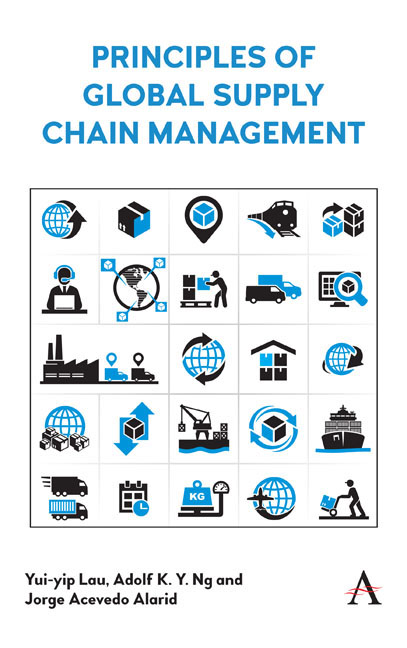Book contents
- Frontmatter
- Contents
- List of Figures
- List of Tables
- Foreword
- Preface
- About the Authors
- 1 Introduction
- 2 Managing Outbound Logistics and Distribution
- 3 Supplier Selection and Procurement
- 4 Warehouse Management
- 5 Case Studies in Food Supply Chains
- 6 Inland Ports in Global Supply Chains
- 7 Climate Change in a Global Environment
- 8 Sustainability in Infrastructure-Based Supply Chains
- 9 Reverse Logistics
- 10 Logistics Associations
- 11 Logistics Education
- 12 Case Exercises in Global Supply Chains
- Appendix
- Index
4 - Warehouse Management
- Frontmatter
- Contents
- List of Figures
- List of Tables
- Foreword
- Preface
- About the Authors
- 1 Introduction
- 2 Managing Outbound Logistics and Distribution
- 3 Supplier Selection and Procurement
- 4 Warehouse Management
- 5 Case Studies in Food Supply Chains
- 6 Inland Ports in Global Supply Chains
- 7 Climate Change in a Global Environment
- 8 Sustainability in Infrastructure-Based Supply Chains
- 9 Reverse Logistics
- 10 Logistics Associations
- 11 Logistics Education
- 12 Case Exercises in Global Supply Chains
- Appendix
- Index
Summary
Since the rise of globalization, the role of warehouses has fundamentally changed from operational to strategic. Warehouses are one of the key players in supply chain management. Hardware and software are critical elements for facilitating smooth warehouse operations in the twenty- first century. In this chapter, we will achieve the following objectives:
• explain the role of warehouses in the supply chain;
• discuss a variety of warehouse activities;
• give an overview of warehouse management;
• learn about a case study of the adoption of RFID technology at air cargo terminals;
• illustrate the examples of three Hong Kong air cargo terminals on warehouse management (HACTL, AAT and Cathay Pacific); and
• study a bonded warehouse at a container terminal.
The Role of Warehouses in the Supply Chain
For a supply chain to realize maximum strategic benefits from logistics, logistics management must be integrated. Integrated logistics management must include five functional areas of logistics work (see Figure 4.1). These functional areas are related to the capabilities for achieving logistics value from integrated logistics management.
The critical exigencies in the processes of logistics centers (LCs) can enhance the role of warehouse processes in outsourcing when customer behavior changes. The complexity and the opportunity to conduct additional logistics services beyond the range of warehousing and storage of goods have prompted the creation of buildings of different functionalities. It is therefore necessary to specify which buildings are warehouse buildings (WBs), warehousing centers (WCs) and LCs. Developers engaged in the development of storage space mistakenly define LCs; therefore, fundamental functional differences between the LC and other buildings should be filtered (Kolinska, 2016). Table 4.1 shows the evolution of the definition of the scope of the LC.
The main characteristic of LCs is the intermodal terminal object, although this is not the only feature that identifies LCs, WCs and WBs. Table 4.2 shows a comparison of the individual functionality of logistics infrastructure objects (Kolinska, 2016).
As products and materials are procured, a value- added inventory flow is initiated that ultimately results in the ownership transfer of finished products to customers. However, with the emergence of globalization, reducing lead times requires the continuous improvement of material flow throughout the logistics supply chain.
- Type
- Chapter
- Information
- Principles of Global Supply Chain Management , pp. 55 - 68Publisher: Anthem PressPrint publication year: 2019



